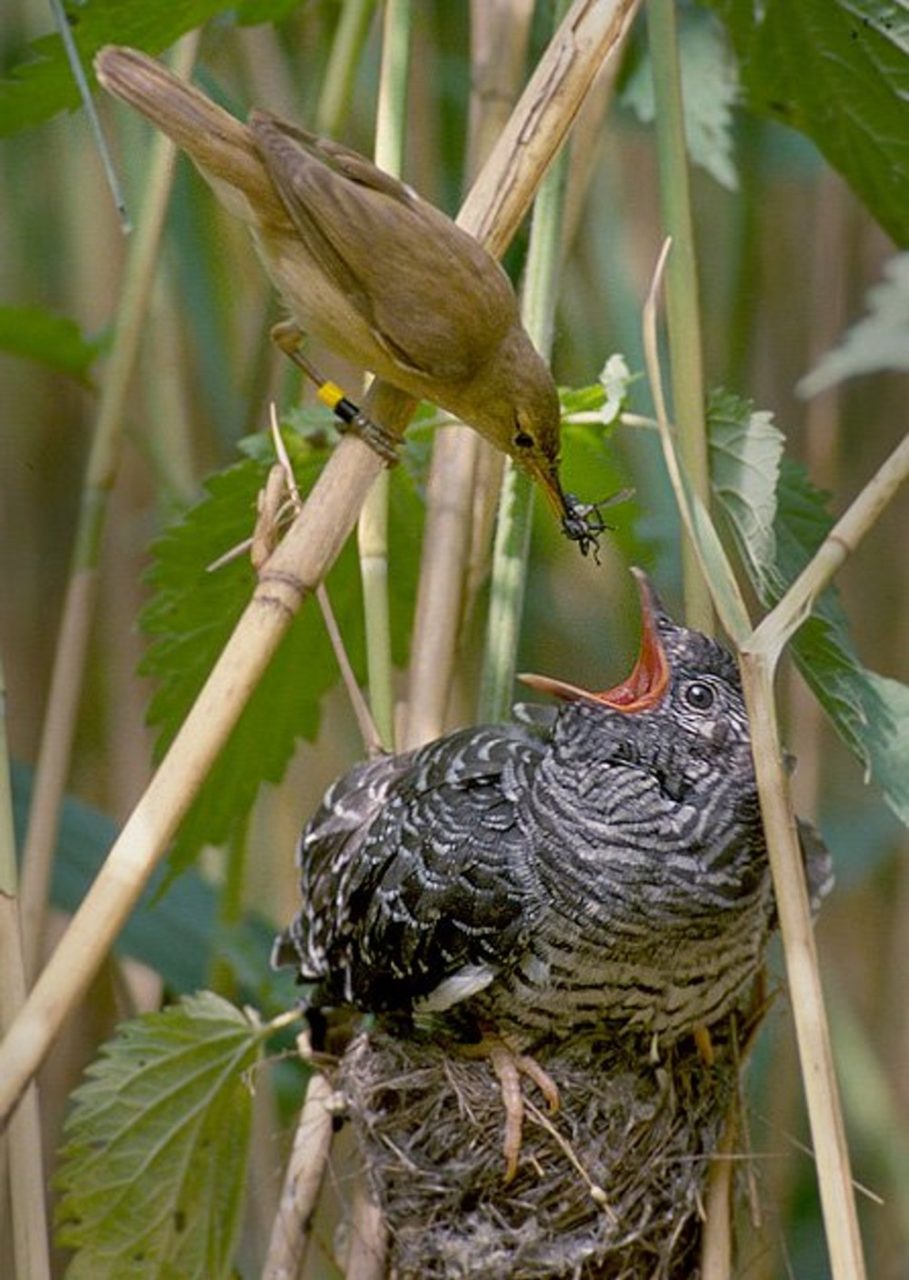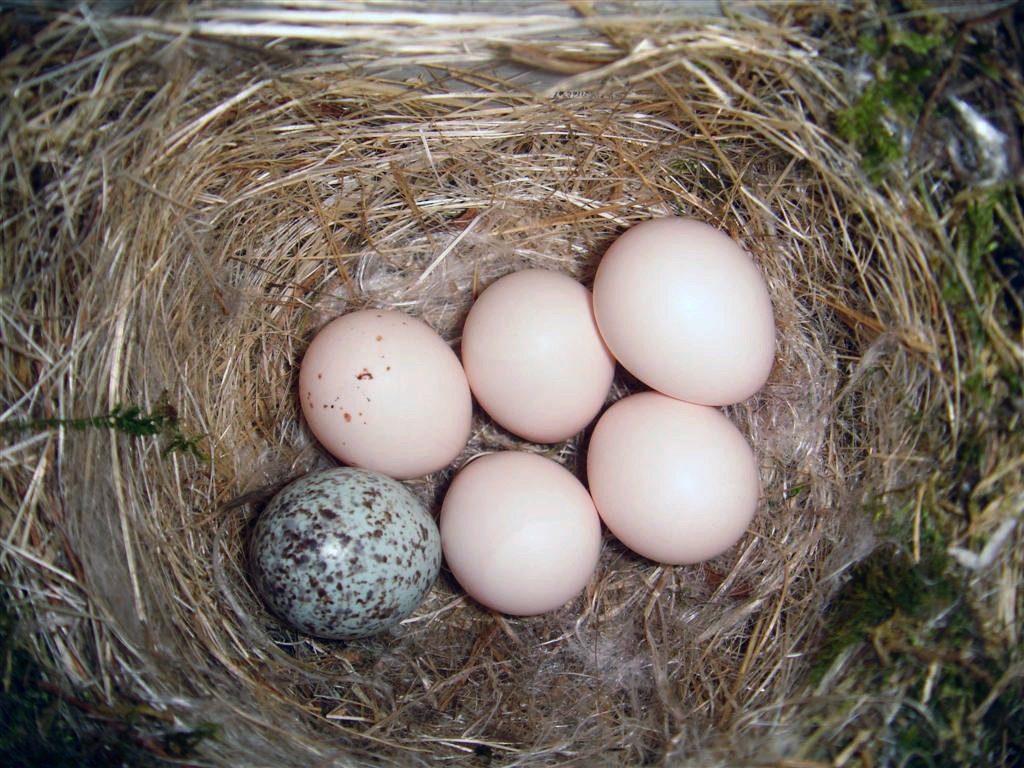As brood parasites, wood duck parents often place some of their eggs in other birds’ nests. It’s a strategy to have as many offsprings reach adulthood as possible, and it sometimes results in interesting situations.
 Amateur photographer Laurie Wolf captured this incredible image of a duckling sharing a nest with an owl in her backyard. Photo courtesy of Laurie Wolf
Amateur photographer Laurie Wolf captured this incredible image of a duckling sharing a nest with an owl in her backyard. Photo courtesy of Laurie Wolf
One day, wildlife artist and amateur photographer Laurie Wolf noticed a small fluffy bird bobbing up and down inside the nest box in her Jupiter, Florida, backyard, National Geographic reports. A couple of weeks before, an eastern screech owl had taken up residence there, so Wolf immediately thought it was an owl chick. But it wasn’t.
As a storm started rolling in and the sky darkened, the photographer and her husband finally caught a glimpse of the mother owl poking her head out of the nest box. And on her side, there was a tiny yellow-and-black duckling peeping out.
“The two of them were just sitting there side by side,” said Wolf. “It’s not believable. It’s not believable to me to this day.”
After getting over her bewilderment, Wold contacted a raptor expert as she was concerned that the predatory owl might eat the wood duck chick. After the expert confirmed the duckling might be in danger, a local wildlife sanctuary agreed to take care of the animal in case she somehow managed to catch it.
But just as she and her husband were about to attempt to capture the little bird, it leapt out of the nest box and “made a beeline” to a nearby pond. The couple hasn’t seen it since.
 The unusal pair from another perspective. Photo courtesy of Laurie Wolf
The unusal pair from another perspective. Photo courtesy of Laurie Wolf
“I don’t think I’ll ever experience anything like that in my life again,” said Wolf.
But according to Christian Artuso, the Manitoba director of Bird Studies Canada, she might as well be wrong about that. Wood ducks have been scientifically recorded living with eastern screech owls before. Artuso himself made a similar observation back in 2005 while studying eastern screech owls for his Ph.D. In that case, the female owl was actually able to incubate and hatch three wood duck chicks, says Artuso, who published the findings in 2007 in the Wilson Journal of Ornithology.
“It’s not commonly documented, but it certainly happens,” Artuso concluded. “We know this occurs, but we really don’t know the frequency. So I was happy to see another example of this.”
Similarly to cuckoos, wood ducks are brood parasites which means that parents will sometimes lay an egg or two in someone else’s nest – usually another wood duck or some closely related species. Spreading their eggs in this manner slightly improves their chances of passing on their genes, especially if they lose their own eggs to a predator.
 A Eurasian reed warbler raising a common cuckoo. Photo: Per Harald Olsen
A Eurasian reed warbler raising a common cuckoo. Photo: Per Harald Olsen
There have been other records of birds of prey incubating the eggs of waterfowl, including an American kestrel hatching a bufflehead and an osprey fostering a clutch of Canada geese.
But how come the female predator fails to realize she’s sitting on the wrong eggs? Wood duck eggs, for example, are not only more oblong in shape than owl eggs, they’re also about twice the size. According to Artuso, it’s impossible to tell what is going on in the wild owl’s head, but the occurence could as well be a case of what scientists call supernormal stimuli.
“The parents might be thinking, Oh my god! This egg is huge! We’re going to have the best baby in the world!”
But it’s more likely that it happens so rarely that the eastern screech owl simply hasn’t evolved a defense against it.
 Eastern phoebe nest with one brown-headed cowbird egg. Photo: Galawebdesign
Eastern phoebe nest with one brown-headed cowbird egg. Photo: Galawebdesign
OK, but has the duckling survived? Artuso says it might have. Wood duck chicks are precocial, meaning they are quite independent from the get-go. There have also been many occurences when chicks from one brood joined up other chicks from another brood.
So yes, the little wood duck chick may have survived, even if it was hatched by an owl.







